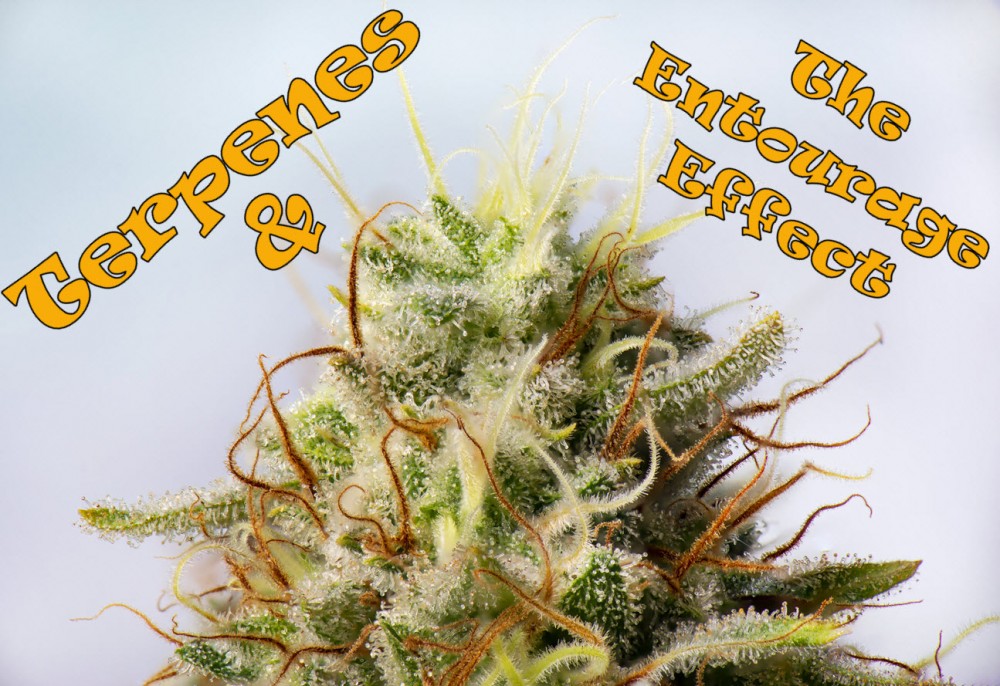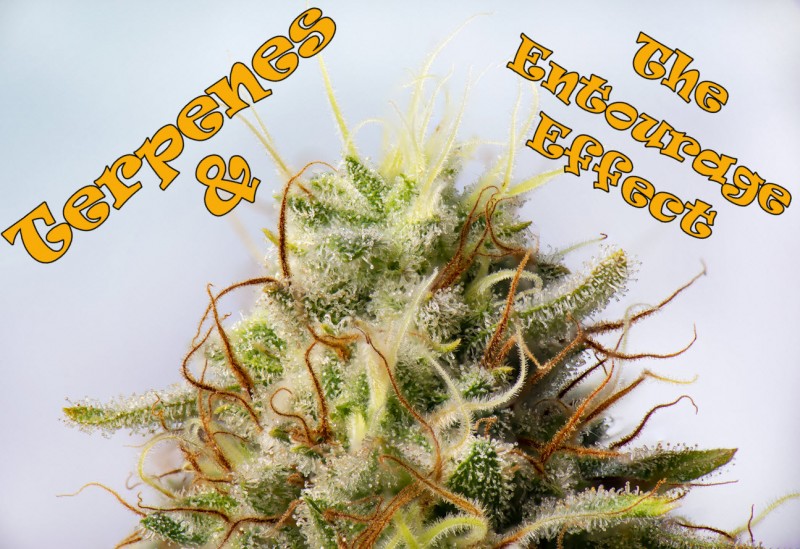Terpenes and the Entourage Effect

Just a few years ago, the word ‘terpenes,’ probably wouldn’t have rung any bells for the common cannabis consumer. But thanks to the increasingly widespread acceptance of cannabis’ healing properties, more people have become attuned to its many beneficial compounds and more research has been done into exploring just how this ‘wonder plant’ works. This quest has led scientists, and many cannabis aficionados, to learn more about the many compounds that make up and contribute to cannabis’ beneficial effects, including the lesser known, though incredibly important, terpenes.
So what exactly are terpenes? Simply put, they’re a group of organic compounds found in cannabis that give it its distinct aroma and flavor. It’s that easily recognizable, and undeniable, smell that’s commonly associated with it. But contrary to what some may think, terpenes aren’t only found in cannabis. Other organisms and plants also contain these aromatic compounds, like oranges, lavender, and pine trees.
Terpenes are formed inside cannabis trichomes and are affected by the intensity and spectrum of light exposure. Different cannabis strains carry their own distinct terpene profiles, popular ones include pine, wood, herbal, citrus, skunk, and diesel.
Plants produce terpenes to protect themselves against insects, herbivores, and other potential threats. Apart from being the plant’s first line of defense, terpenes are also responsible for plants’ oxygenation and regeneration processes. While more than 200 types of terpenes are found in cannabis, many of them are present in very low quantities, making them undetectable to scientists. The ones that are detectable are:
Myrcene: One of the most prominent terpenes in cannabis, it’s responsible for the earthy aroma it’s usually associated with. Apart from its signature scent, it’s also been found to be helpful in treating osteoarthritis and alleviating pain.
Caryophyllene: The second most prominent terpenes, it’s also found in cloves, rosemary, and hops. Like myrcene, caryophyllene carries a fragrant herbal aroma and is believed to have pain relieving and anti-inflammatory properties.
Pinene: Commonly found in - you guessed it - pine trees, pinene is the most prevalent terpenes found in nature. It’s responsible for the piney aroma of certain cannabis strains and some studies have shown that aside from its anti-inflammatory benefits, it could also help protect from ulcers and improve airflow to the lungs.
Limonene: Typically found in citrus and responsible for the smells associated with those types of fruits, it’s also often added to cleaning products and fragrances. Limonene is found to boost the immune system and alleviate heartburn. It can also be used as a solvent to get rid of gallstones that are rich in cholesterol.
Terpinolene: This herby and citrusy terpenes is often found in plants like lilac, rosemary, apples, and conifers. Some studies have shown that it can be used as an antioxidant and has demonstrated sedative properties in animal studies. It’s also shown potential for decreasing the proliferation of cancer cells.
Other common types of terpenes found in cannabis include humulene, linalool, ocimene, nerolidol, bisdabolol, and guiaol,
One of the biggest reasons why terpenes has gone mainstream is because of something called the entourage effect. You’ve probably heard about it before. It’s the idea that cannabis’ positive health benefits are a result of the synergistic combination of the many compounds that are contained in the plant, specifically, the cannabinoids, flavonoids, and terpenes. In this case, the sum is very much greater than its parts.
The entourage effect is what has led many researchers to conclude that ‘whole plant’ extractions of cannabis are superior to single-compound ones, such as CBD isolate for instance. Scientists also believe that terpenes and other cannabinoids support each other to produce the positive effects commonly associated with cannabis, including both its psychoactive effects and its therapeutic benefits. This kind of support is why many experts also prefer to call it the ‘ensemble effect’ rather than the ‘entourage effect’ as the latter term implies that there’s one ‘rockstar’ compound that’s supported by the others, but that’s not the case here. In fact, although they mostly enhance each other, there are some cases where they can suppress each other; it all depends on the specific cultivar of cannabis.
Studies have also shown that terpenes play a crucial role in moderating the intoxicating effects of THC as well as creating a harmonious relationship with phytocannabinoids and increasing their healing properties. Recently, terpenes extracts have even been showing up in a lot of unexpected places thanks to its rise in popularity. In Los Angeles, bars are even experimenting with adding terpenes extracts to cocktails and other libations as an alternative to its more popular cousin cannabidiol.
As is the case with many aspects of cannabis, the research being done on terpenes is still only the tip of the iceberg. As we find out more about how this incredible compound works, you can expect terpenes cocktails to be just one part of the ever-expanding list of therapeutic products to come out.
THE ENTOURAGE EFFECT, READ MORE..
WHAT IS THE ENTOURAGE EFFECT IN CANNABIS? REAL OR NOT?








